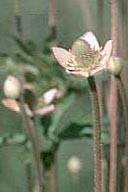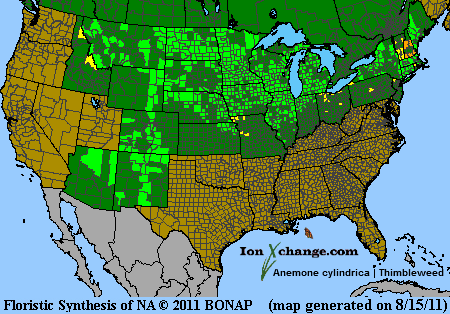 Loading... Please wait...
Loading... Please wait...- Home
- SEEDS
- SEED MIXES
- BUY PLANTS
- Info Request
-
Educational Videos
- Greenhouse Transplanting Demonstration
- Native Seed Cleaning demonstration at Ion Exchange Native Seed and Plant Nursery
- Attracting Butterflies
- Bidens - Bidens cernua Harvest Video
- Big Blue Stem Harvest
- Butterfly Milkweed Video
- Button Blazingstar - Liatris aspera Video
- Buttonbush - Cephalanthus occidentalis Video
- Canada Anemone - Anemone canadensis Harvest Video
- Cardinal Flower - Lobelia cardinalis Video
- Control Burn - Wildflower Field
- Cream Gentian - Gentiana flavida
- Culver's Root - Veronicastrum virginicum Video
- Cup Plant - Silphium perfoliatum Video
- Dormant Seeding | Planting
- Earthyman's Favorite Wildflowers Video
- Eco-Friendly Golf Course Seed Mix
- Floating Islands
- Fringed Loosestrife - Lysimachia ciliata Video
- Giant Yellow Hyssop - Agastache nepetoides Video
- Indiangrass - Sorghastrum nutans Video
- Iowa Prairie Partner Program
- Leadplant - Amorpha canescens (Potted) Video
- Meadow Blazingstar - Liatris ligulistylis
- Midland Shooting Stars - Dodecatheon meadii Video
- Native Plant Nursery Field Irrigation Experiment
- Nodding Onion - Allium cernuum Video
- Ohio spiderwort - Tradescantia ohiensis Video
- Old Man's Beard - Clematis virginiana blooms Video
- Oxeye Sunflower - Heliopsis helianthoides Video
- Prairie Spiderwort - Tradescantia bracteata
- Purple Coneflower - Echinacea purpurea Video
- Rain Garden or Water Garden Video
- Rattlesnake Master - Eryngium yuccifolium Video
- Riverbank Stabilization - Wetland Plants
- Rose Mallow - Hibiscus militaris Video
- Rosinweed - Silphium integrifolium Video
- Royal Catchfly - Silene regia
- Showy Tick Trefoil - Desmodium canadense Video
- Sneezeweed - Helenium autumnale Video
- Swamp Betony - Pedicularis lanceolata Video
- Swamp Milkweed - Asclepias incarnata Video
- Sweet Blackeyed Susan - Rudbeckia subtomentosa Video
- Tall Coreopsis - Coreopsis tripteris Video
- Urban Butterfly Garden
- Wild Bergamot - Monarda fistulosa Video
- Wild Geranium - Geranium maculatum Harvest
- Wild Goldenglow - Rudbeckia lanciniata Video
- Wild Petunia - Ruellia humilis Harvest Video
- Woodland Knotweed - Polygonum virginianum Video
- Yellow Coneflower - Ratibida pinnata Video
- Blog
- Resources
- Policies
Contact Us
Phone:
563-419-0837
or 563-535-7231
Email:
hbright@ionXchange.com
Browse Products
Add to Wish List
You Recently Viewed...
Our Newsletter
Product Description
Thimbleweed, Long fruited Anemone (Anemone cylindrica) - Very common throughout all of Eastern North America, Thimbleweed has showy white flowers and can grow to about two feet in height. It prefers moist environments in the prairie and calcareous or alluvial soils. It also grows along railroads and in moist roadside ditches. It doesn't do well when competing for space with other, taller prairie species, but it will thrive in wet, disturb areas at pothole edges. Anemone canadensis blooms from late May through the better part of July.
Anemone from the Greek term anemone, meaning "wind" which probably refers to seed distribution or perhaps because the delicate stems and leaves sometimes appear to tremble in the wind. According to Greek mythology, an anemone grew up from the spots where the tears of Venus dropped to the ground as she mourned the death of Adonis.
Ranunculaceae Family - "Thimbleweed, Long-fruited Anemone"
| Sun Exposure | Savanna, Prairie |
| Soil Moisture | Mesic, Dry Mesic, Dry |
| Bloom Time | Spring, Summer June, July |
| Bloom Color | White |
| Max. Height | 2-3 Feet |
| Wetland Code | UPL |
| Germ Code | A |
| Seeds Per Packet | 200 |
| Seeds Per Ounce | 26,000 |
Edible Uses: Unknown
Medicinal Uses:
The root of this plant was one of the most highly esteemed medicines of the Omaha and Ponca Indians. A wash of the pounded boiled root was applied externally to wounds. The root contains anemonin, which is said to be a potent antiseptic.
A poultice made from the leaves is used to treat burns.
A tea of the roots was used in the treatment of headaches and dizziness.
A decoction of the stem and fruit is used as a wash for sore eyes.
Herbal Uses: Unknown










